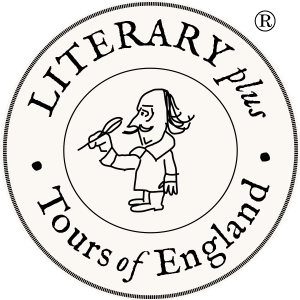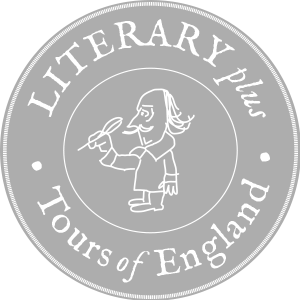04 Jul Byron’s Newstead Abbey
“Truth is always strange, stranger than fiction.” – Lord Byron
The Ultimate Romantic
Byron was the world’s first pop star. He was also “mad, bad and dangerous to know”, according to Lady Caroline Lamb. She should know since she was one of Byron’s most ardent lovers. Their notorious affair was the subject of the popular movie Lady Caroline Lamb (1972) with Richard Chamberlain and Sarah Miles. Byron was indeed famous for more than his poetry: including his sexual exploits, his colorful lifestyle, his massive debts and his derring-do. Absurdly handsome and debonair, he was the personification of the so-called Romantic Age.
George Gordon Byron, the sixth Baron of that name, was one of the finest poets England has ever produced. In his short life he wrote many poems that are still revered today. Among his major works we might single out the long narrative poem Childe Harold’s Pilgrimage (1818) describing the travels and reflections of a world-weary young man; also the epic satirical poem Don Juan (1819-24), which turns the tables on the classic story by making the women the seducers. Among his short poems, She Walks in Beauty (1814) is perhaps the best-loved of all.

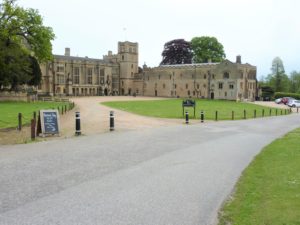
Byron at Newstead Abbey
Continuing our literary tour of England, Judy and I visited Newstead Abbey in Ravenshead, near Nottingham. Originally a 12th Century Augustinian priory, this was the Byron family’s ancestral home. Byron inherited the property on the death of his profligate great-uncle and moved there with his mother in 1809. The scale of the estate must have contributed to Byron’s extravagant taste and sense of his own importance. He was the last of his line to live at Newstead Abbey: the cost of maintaining the place caused him and his mother to move to Nottingham in 1814.
Financial constraints meant that Byron could occupy only relatively few rooms in the house. These are impressive and contain original furniture and other artifacts. Most striking is the sumptuously appointed bedroom, with the exquisite bed that Byron slept in. We were also impressed by the long gallery in which a timeline of Byron’s eventful life is displayed.


The house is set in 300 acres of parkland with paths that meander past lakes and waterfalls. We particularly enjoyed the spectacular formal gardens including the Rose Garden, Sub-tropical Garden, Rock Garden and Japanese Garden. Byron’s Oak, set in the center of the front lawn, is so named because the poet immortalized it in To an Oak at Newstead (1807).
Before moving on, there was time for a cup of tea and a homemade sandwich in the delightful Café Abbey and to buy souvenirs from the well-stocked shop. Today Newstead Abbey is owned by the City of Nottingham and is open to visitors year-round.
In 1816 Byron left England and moved to Italy, where he lived in various northern cities until 1823. He then went to Greece to fight for the liberal cause in the Greek War of Independence (from the Turks) where he remains a national hero to this day. He died from a violent fever in Missolonghi in 1824 at the age of 36.
Byron’s Last Resting Place
Byron’s body was returned to England for burial in the family vault in St Mary Magdalene Church in Hucknall, a dreary mining town barely three miles from Newstead Abbey. This was Judy’s and my next stop. We were fortunate to meet and spend time with friends of the church, who ensured we made the most of our visit. Displays about Byron, his funeral and his burial place are well organized and informative. It seems that the funeral was a suitably spectacular event. “The church was crowded to overflowing and, as the service proceeded, it was evident that the congregation were deeply moved.” (Ref: Byron and Where He is Buried by Thomas Gerrard Barber (Hucknall Parish Church).) Among early pilgrims to Byron’s grave were Martin Van Buren (8th President) and Washington Irving (author of Rip Van Winkle).
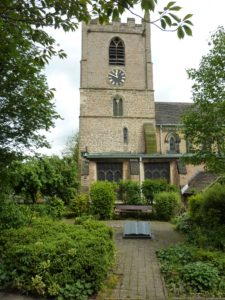

The church contains numerous Byronic commemorations, including a passage from Childe Harold titled The Late Remorse of Love” above the family vault. Elsewhere there’s a striking three-dimensional profile of Byron above another passage from Childe Harold, this one titled “Immortality”. Across the street from the church there’s a rather incongruous life-size statue of Byron in an alcove above a furniture shop!
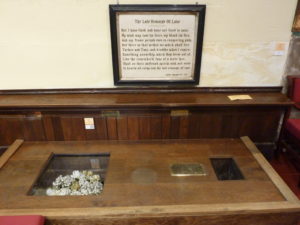
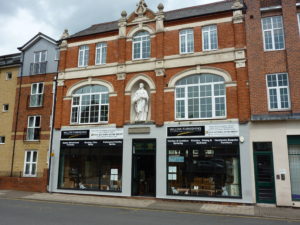
In the church, as an interesting footnote to Byron’s life, we learned about his only legitimate child, Ada Lovelace. She never knew her father since he separated from his wife shortly after Ada’s birth, although she was fascinated by him and his fame. She turned her mind to science, however: her flare for mathematics brought her to the attention of Charles Babbage, designer of the first mechanical computer. For Babbage, Ada produced an algorithm that calculated Bernouilli numbers and this is widely regarded as the first-ever computer program. Like her father, Ada died at age 36: she is buried next to him in the family vault.
If you’re thinking of visiting Newstead Abbey, allow at least three hours to explore the house and gardens. Be sure to outfit yourself with comfortable shoes, a light jacket and a fascination with the exotic. Looking for more to do in the area? Consider the Peak District: 555 square miles of dramatic moorland, with countless literary associations. To visit Newstead Abbey, the Peak District and other fascinating literary and non-literary sites associated with your favorite writers, plan your itinerary here.
